Non-Native
There are two species of non-native birds, the European Starling and the House Sparrow, which will nest in Purple Martin housing. Both species were brought over from Europe and should never be permitted to nest in martin housing. They will take over martin compartments, destroy eggs, and kill nestlings. They can also prevent martins from nesting and often injure or kill adults. House Sparrows and European Starlings are not protected and may be legally controlled by trapping or shooting, depending on your city ordinances.
Identification
Starlings are larger than Purple Martins, with a stocky body, short tail, and a long yellow beak. Juvenile starlings may have a black beak. They have an iridescent purple-green-black coloring. Their winter plumage is brownish with white spots. They are seed eaters and are oftentimes found on the ground below feeders.
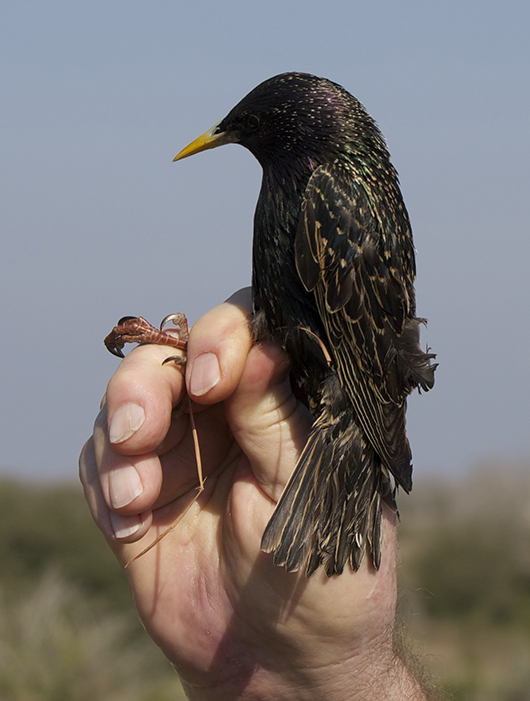
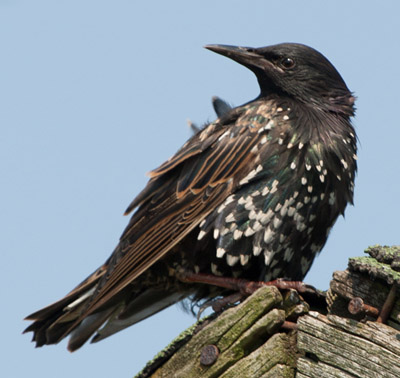
There are many different breeds of sparrows—only the House Sparrows are non-native. Other native sparrows such as the Song Sparrow and White-Crowned Sparrows will not be interested in nesting in your Purple Martin housing.
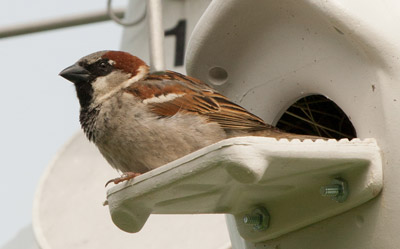
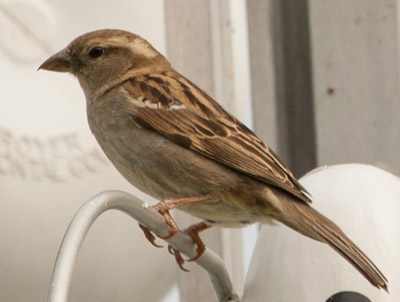
Preventative Action
If the martins have not yet arrived in your area, keep the entrances of your housing closed so the starlings and House Sparrows cannot enter. Once the martins have arrived, the most effective way of removing these non-native birds is trapping and/or shooting. This can also be done before the martins arrive.
To help prevent the starlings from nesting at your colony site we recommend using starling-resistant entrance holes (SREH) at your colony site. These specific entrances, called: crescent, Excluder, Modified Excluder, Excluder II, and Conley 2 will help keep starlings out of the cavities.
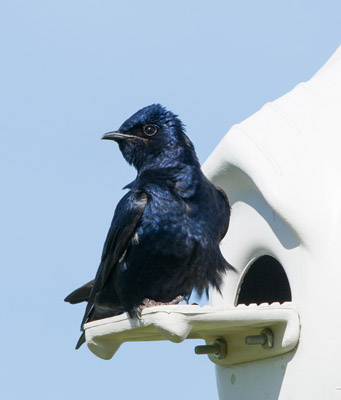
There are two different styles of traps available for starlings and House Sparrows; bait traps and cavity traps. Baited traps, where the birds are lured into a trap by using food, work best when their normal food is scare—late fall through early spring. You may also try baiting traps with nesting material—some small scraps of bright yarn work well for House Sparrows during the nesting season.
Cavity traps, which can be stand-alone traps or inserted into the nesting compartments, work best when the birds are interested in nesting. All traps must be carefully monitored to avoid harming native birds that may accidentally be captured.
Recommended Reading:
Humane Euthanasia
Controlling House Sparrows and Starlings Humanely
Nest ID for Cavity Nesters
Controlling House Sparrows
House Sparrow Myths
